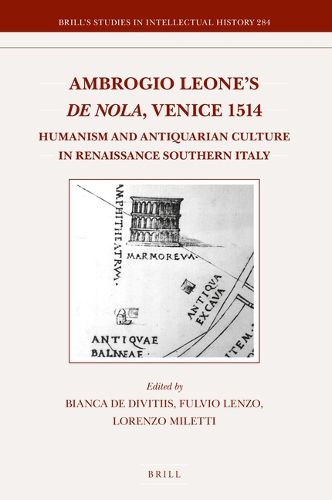Readings Newsletter
Become a Readings Member to make your shopping experience even easier.
Sign in or sign up for free!
You’re not far away from qualifying for FREE standard shipping within Australia
You’ve qualified for FREE standard shipping within Australia
The cart is loading…






This volume offers the first comprehensive study of the De Nola (Venice 1514), a hitherto underappreciated Latin text written by the Nolan humanist and physician Ambrogio Leone. Furnished with four pioneering engravings made with the help of the Venetian artist Girolamo Mocetto, the De Nola is an impressively rich and multifaceted text, which contains an antiquarian (and celebratory) study of the city of Nola in the Kingdom of Naples. By describing antiquities, inscriptions, and buildings, as well as social and religious phenomena, the De Nola offers a precious window into a southern Italian Renaissance city, and constitutes a refined example of sixteenth-century antiquarianism. The work is analysed in a multidisciplinary approach, encompassing art and architectural history, antiquarianism, literature, social history, and anthropology.
$9.00 standard shipping within Australia
FREE standard shipping within Australia for orders over $100.00
Express & International shipping calculated at checkout
This volume offers the first comprehensive study of the De Nola (Venice 1514), a hitherto underappreciated Latin text written by the Nolan humanist and physician Ambrogio Leone. Furnished with four pioneering engravings made with the help of the Venetian artist Girolamo Mocetto, the De Nola is an impressively rich and multifaceted text, which contains an antiquarian (and celebratory) study of the city of Nola in the Kingdom of Naples. By describing antiquities, inscriptions, and buildings, as well as social and religious phenomena, the De Nola offers a precious window into a southern Italian Renaissance city, and constitutes a refined example of sixteenth-century antiquarianism. The work is analysed in a multidisciplinary approach, encompassing art and architectural history, antiquarianism, literature, social history, and anthropology.